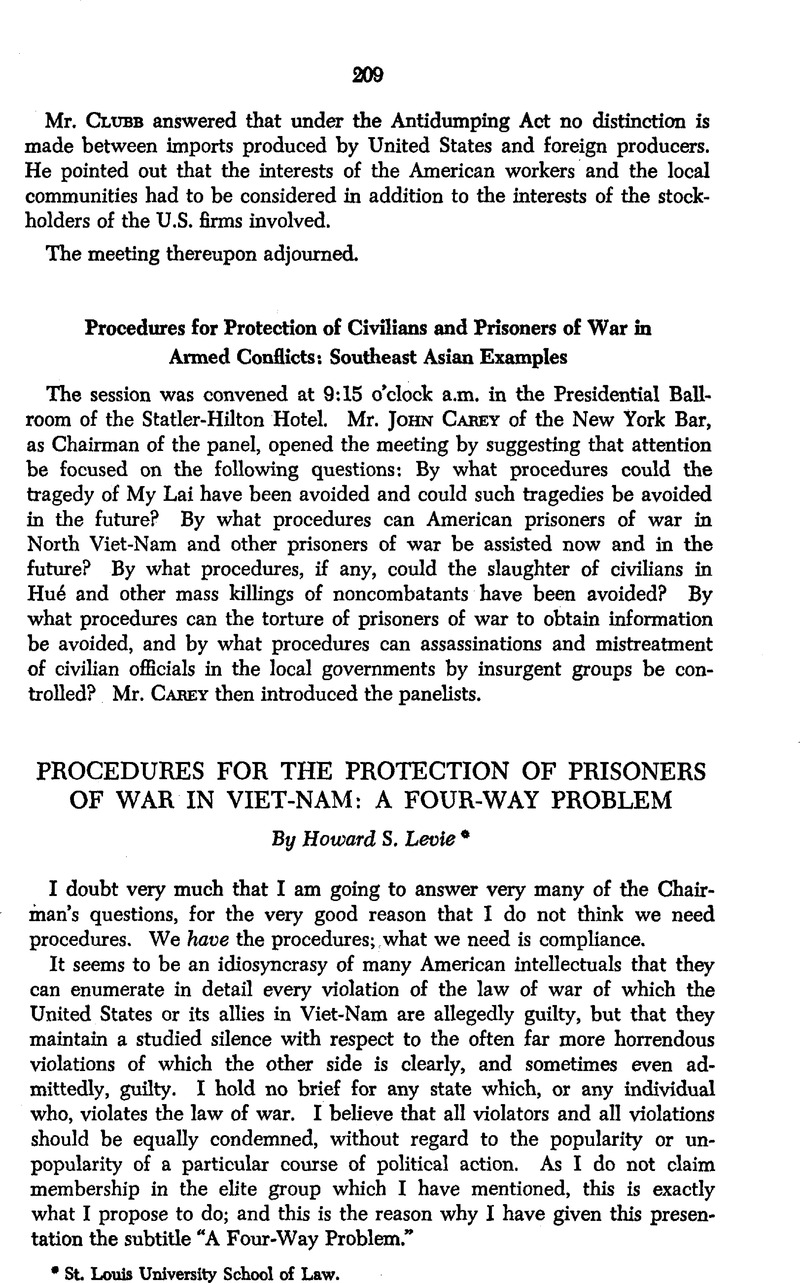No CrossRef data available.
Published online by Cambridge University Press: 28 March 2017

1 6 U.S.T. 3316, 75 U.N.T.S. 383. It would almost seem that many of the new nations consider accession to certain multilateral treaties to be a “status symbol,” similar to membership in the United Nations.
2 11 Int. Rev. of the Red Cross 32 (No. 118, Jan. 1971).
3 Levie, , “Maltreatment of Prisoners of War in Vietnam” in 48 Boston U. Law Rev. 323, 338-339 (1968)Google Scholar.
4 E.g., United States v. Griffen, 39 C.M.R. 586 (1968); United States v. Schultz, 39 C.M.R. 133 (1969).
5 Farer, , “The Nuremberg Trials and Objection to Service in the Viet-Nam War,” in 1969 Proceedings, American Society of International Law 140, 153.Google Scholar
6 Pictet, Commentary on the Geneva Convention relative to the Treatment of Prisoners of War 137-138 (1960).
7 Levie, note 3 above, at 339-340. The current regulation so providing is par. 3b, MACV Directive No. 190-3, May 12, 1970.
8 Senate Committee on Foreign Relations, Geneva Conventions for the Protection of War Victims, S. Exec. Rep. No. 9, 84th Cong., 1st Sess., at 28-29.
9 “. . . the mere killing of one country man of ours, whether combatant or not, even with a rifle shot, the mere destruction of a hut, of a bush in our countryside, is enough to turn the American pirate into a criminal . . .” Juridical Sciences Institute, U.S. War Crimes in Viet-Nam 203 (Hanoi, 1968). It is pertinent to note that the reservations made by all the members of the Communist bloc, including North Viet-Nam, to Art. 85 of the 1949 Prisoner-of-War Convention were specifically restricted to war crimes and crimes against humanity and omitted crimes against peace.
10 U.N. Docs. A/7720, Nov. 20, 1969, and A/8052, Sept. 18, 1970.
11 Report of the Third Committee, Doc. A/8178, Dec. 4, 1970.
12 In its “Formulation of the Nürnberg Principles,” the International Law Commission dealt with Crimes against Peace in Principle VI. The commentary on this Principle contains the following statement: “. . . Some members of the Commission feared that everyone in uniform who fought in a war of aggression might be charged with the ‘waging’ of such a war. The Commission understands the expression to refer only to high-ranking military personnel and high State officials, and believes that this was ako the view of the Tribunal.” 1950 I.L.C. Yearbook (II), 376.